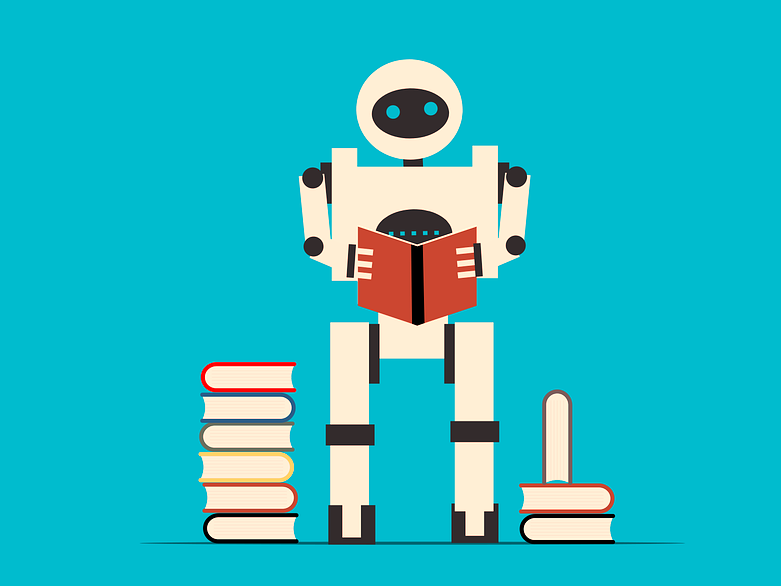What is Machine Learning?
Machine learning is a type of technology that enables computers to learn and improve by themselves without being specifically told what to do. This is done by using statistical methods to analyze data and identify patterns, which can then be used to make predictions or decisions.
The process of machine learning involves several steps, including collecting and preparing data, choosing a suitable machine learning algorithm, training the algorithm to learn from the data, evaluating the algorithm's performance, and making adjustments to improve its accuracy.
Machine learning can be used in many different areas, such as understanding images and videos, processing human language, recognizing speech, and developing self-driving cars. It's a powerful tool that allows computers to learn and improve from experience, making them better at performing tasks and making decisions.
There are three main types of machine learning: supervised learning, unsupervised learning, and reinforcement learning.
- Supervised learning: This type of machine learning involves training an algorithm on a labeled dataset. The algorithm learns to map input data to output labels by finding patterns in the data. For example, a supervised learning algorithm could be trained to classify images of cats and dogs based on their features. Supervised learning is used in many applications, such as image recognition, speech recognition, and natural language processing.
- Unsupervised learning: In unsupervised learning, the algorithm is given an unlabeled dataset and tasked with finding patterns and relationships in the data. The goal is to identify the underlying structure of the data without being told what to look for. Clustering is a common unsupervised learning technique, where the algorithm groups similar data points together based on their features. Unsupervised learning is used in applications such as anomaly detection, customer segmentation, and recommendation systems.
- Reinforcement learning: In reinforcement learning, the algorithm learns through trial and error by interacting with an environment. The algorithm is rewarded or punished based on its actions, and it learns to maximize its reward over time. Reinforcement learning is used in applications such as game playing, robotics, and autonomous vehicles.
In addition to these main types of machine learning, there are also several subfields, such as deep learning, transfer learning, and semi-supervised learning, which use variations of these three main types.
The Origins of Machine Learning
The concept of machine learning has been around for several decades, but its origins can be traced back to the early days of artificial intelligence research in the 1950s and 1960s. The development of computer hardware and the availability of large datasets in the 1980s and 1990s helped to accelerate the growth of machine learning as a field.
The first practical machine learning algorithm, known as the Perceptron, was developed in 1958 by Frank Rosenblatt. This algorithm was used to classify images and was considered a breakthrough in artificial intelligence at the time. In the 1970s, researchers began developing more sophisticated machine learning algorithms, such as decision trees and neural networks. The 1980s saw the emergence of statistical learning methods, such as logistic regression and support vector machines.
The 1990s saw the development of more advanced neural network models, such as convolutional neural networks and recurrent neural networks, which are still widely used today in applications such as image and speech recognition.
In recent years, the development of deep learning techniques and the availability of large datasets and powerful computing resources have led to significant advances in the field of machine learning.
How can Businesses can benefit from Machine Learning
Businesses can benefit from machine learning in many ways, as it has the potential to improve efficiency, reduce costs, and generate valuable insights from data. Here are some of the ways that businesses can benefit from machine learning:
- Predictive analytics: Machine learning algorithms can be used to predict future trends and behaviors based on historical data. This can help businesses make better decisions about things like inventory management, customer behavior, and sales forecasting.
- Personalization: Machine learning algorithms can be used to personalize products and services based on customer preferences and behavior. This can lead to increased customer satisfaction and loyalty.
- Fraud detection: Machine learning algorithms can be used to identify fraudulent transactions and activities, which can help businesses reduce losses and improve security.
- Customer service: Machine learning algorithms can be used to automate customer service interactions, such as chatbots and virtual assistants, which can improve response times and reduce costs.
- Image and speech recognition: Machine learning algorithms can be used to recognize and interpret images and speech, which can be useful in applications such as security, healthcare, and transportation.
- Process automation: Machine learning algorithms can be used to automate repetitive tasks and processes, which can improve efficiency and reduce errors.
How will people benefit from Machine Learning
People can benefit from machine learning in many ways, as it has the potential to improve our daily lives in numerous areas. Here are some of the ways that people can benefit from machine learning:
- Healthcare: Machine learning algorithms can be used to improve medical diagnosis and treatment, leading to better health outcomes for patients. For example, machine learning can be used to analyze medical images, detect early signs of diseases, and develop personalized treatment plans.
- Education: Machine learning algorithms can be used to personalize education, providing students with customized learning experiences based on their individual needs and learning styles. Machine learning can also be used to analyze student performance data and provide teachers with insights to help them improve their teaching methods.
- Transportation: Machine learning algorithms can be used to improve transportation systems, making them safer and more efficient. For example, machine learning can be used to optimize traffic flow, predict maintenance needs, and develop self-driving cars.
- Entertainment: Machine learning algorithms can be used to improve the entertainment experience, providing users with personalized recommendations and immersive experiences. For example, machine learning can be used to recommend movies, music, and TV shows based on a user's preferences and viewing history.
- Personal productivity: Machine learning algorithms can be used to automate repetitive tasks, freeing up time for people to focus on more meaningful work. For example, machine learning can be used to automate email responses, schedule appointments, and organize to-do lists.
What are the Concerns Associated with Machine Learning
There are several concerns associated with machine learning, which relate to its potential impact on society, the workforce, and personal privacy. Here are some of the most common concerns in regard to machine learning:
- Employment: One concern is that machine learning may replace human workers in many industries, potentially leading to unemployment and economic disruption.
- Bias and fairness: Another concern is that machine learning algorithms may not be fair or unbiased, leading to unequal treatment of certain groups of people. This is especially concerning in areas such as hiring and criminal justice.
- Transparency: Machine learning algorithms can be complex and difficult to understand, which can make it difficult to identify and correct errors or biases.
- Privacy: Machine learning often relies on large amounts of data, which can include sensitive personal information. There is a concern that this data could be misused or stolen, leading to violations of privacy and personal security.
- Autonomous decision-making: As machine learning becomes more advanced, there is a concern that it may make decisions without human oversight, potentially leading to unintended consequences or harm.
What industries are most at risk because of Machine Learning
While machine learning has the potential to disrupt and transform many industries, some industries are more at risk of being impacted than others. Here are some industries that are most at risk because of machine learning:
- Manufacturing: Machine learning is increasingly being used in manufacturing to automate production processes and improve efficiency. This could lead to job displacement and a shift in the skill sets required by workers.
- Transportation: Autonomous vehicles, powered by machine learning algorithms, are expected to revolutionize the transportation industry. This could lead to job displacement for drivers and a significant shift in the logistics and transportation landscape.
- Financial services: Machine learning is already being used in the financial services industry for fraud detection, credit scoring, and investment analysis. However, there are concerns about bias and discrimination in these applications, as well as the potential for job displacement.
- Healthcare: Machine learning has the potential to revolutionize healthcare by improving diagnosis, treatment, and patient outcomes. However, there are concerns about privacy, data security, and the potential for job displacement in certain areas such as medical imaging.
- Customer service: Machine learning algorithms are increasingly being used to automate customer service tasks, such as chatbots and virtual assistants. This could lead to job displacement for customer service representatives.
What jobs are most at risk from Machine Learning
Machine learning has the potential to impact a wide range of jobs and industries, but certain types of jobs are more at risk of being displaced or transformed by machine learning than others. Here are some of the jobs that are most at risk from machine learning:
- Routine and repetitive jobs: Jobs that involve repetitive tasks or predictable patterns, such as data entry, assembly line work, and administrative support, are at high risk of being automated by machine learning algorithms.
- Low-skilled jobs: Jobs that require minimal training or education, such as cashiers, receptionists, and customer service representatives, are also at risk of being automated by machine learning.
- Manufacturing and production jobs: Jobs in the manufacturing and production industries, such as assembly line workers and machine operators, are at risk of being displaced by automation and robotics powered by machine learning.
- Transportation and delivery jobs: Jobs that involve driving or delivering goods, such as truck drivers and delivery drivers, are at risk of being impacted by autonomous vehicles and drones that are powered by machine learning algorithms.
- Professional jobs: Even highly skilled jobs, such as lawyers, doctors, and accountants, are not immune to the potential impact of machine learning. Machine learning has the potential to automate certain tasks and processes within these professions, leading to changes in the required skill sets and potentially even displacement in some cases.
- Financial Analysts: Machine learning algorithms can analyze vast amounts of financial data and make predictions about market trends and investment opportunities, which can reduce the need for human financial analysts.
How can someone prepare for a career with Machine Learning
If you are interested in pursuing a career in machine learning, here are some steps you can take to prepare:
- Build a strong foundation in math and programming: Machine learning is a highly technical field that requires a strong understanding of mathematics and computer science. Some key areas to focus on include linear algebra, calculus, statistics, and programming languages such as Python and R.
- Learn the fundamentals of machine learning: There are many online resources available to learn about the basic concepts and techniques used in machine learning. Some popular courses include the Andrew Ng's Machine Learning course on Coursera, and the Google's Machine Learning Crash Course.
- Gain practical experience: Hands-on experience with real-world machine learning problems is essential to build your skills and knowledge. You can gain experience by working on personal projects, participating in Kaggle competitions, or taking part in machine learning internships.
- Stay up-to-date with the latest research and developments: Machine learning is a rapidly evolving field, and staying current with the latest research and developments is crucial. Reading academic papers, attending conferences, and following thought leaders on social media are all great ways to stay informed.
- Specialize in a particular area: Machine learning has many different subfields, such as computer vision, natural language processing, and reinforcement learning. Specializing in a particular area can help you stand out in the job market and increase your expertise in a specific domain.
What jobs will be less affected by Machine Learning
While machine learning has the potential to impact a wide range of jobs and industries, some jobs are less likely to be affected by machine learning than others. Here are some jobs that may be less affected by machine learning:
- Creative and artistic jobs: Jobs that require a high degree of creativity and originality, such as writers, artists, and musicians, are less likely to be automated by machine learning algorithms.
- Human services and care jobs: Jobs that involve caring for and assisting others, such as nurses, social workers, and therapists, are less likely to be automated by machine learning algorithms, as these jobs require a high degree of emotional intelligence and interpersonal skills.
- Research and development jobs: Jobs that involve discovering and developing new technologies and products, such as scientists and engineers, are less likely to be automated by machine learning algorithms, as these jobs require a high degree of problem-solving skills and originality.
- Management and leadership jobs: Jobs that involve managing and leading teams of people, such as executives and managers, are less likely to be automated by machine learning algorithms, as these jobs require a high degree of strategic thinking, communication skills, and decision-making abilities.
- Skilled trades jobs: Jobs that require specialized skills and training, such as electricians, plumbers, and carpenters, are less likely to be automated by machine learning algorithms, as these jobs involve working with physical materials and complex equipment.
Overall, while machine learning has the potential to impact many jobs and industries, jobs that require a high degree of creativity, interpersonal skills, problem-solving abilities, and physical presence are less likely to be automated by machine learning algorithms.










